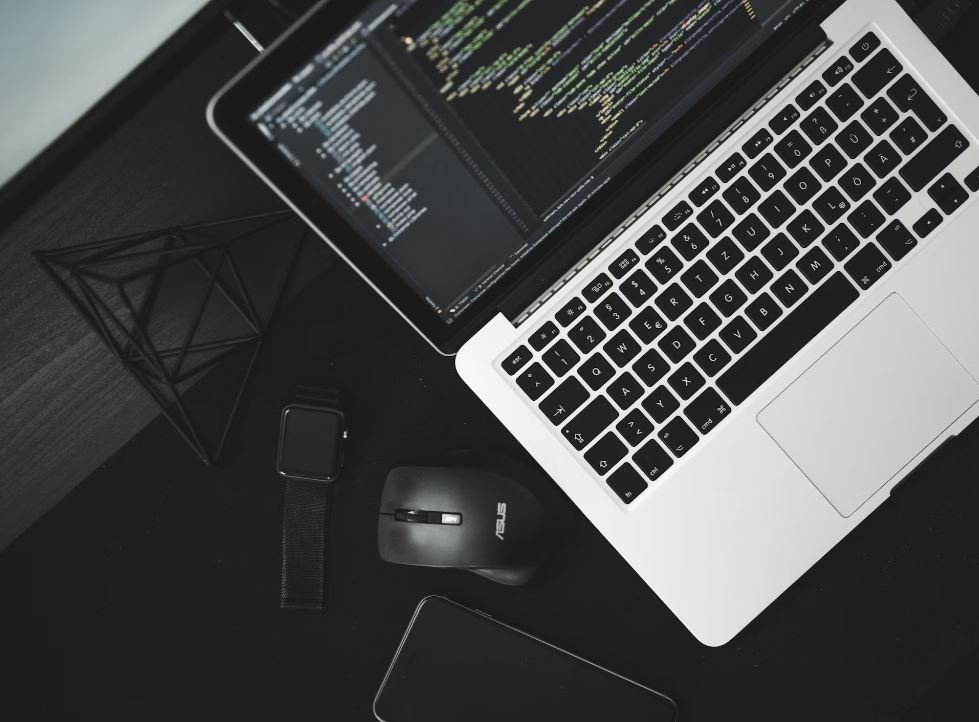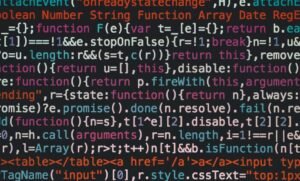AI News Reporter Video
With advancements in artificial intelligence (AI), the field of journalism is now witnessing the emergence of AI news reporter videos. These videos are generated using cutting-edge AI technology that can write scripts, gather data, and present news stories in a way that closely resembles human reporters. AI news reporter videos have the potential to revolutionize the way news is delivered and consumed, but they also raise important questions about ethics and the future of journalism.
Key Takeaways:
- AI news reporter videos are generated using advanced AI algorithms that write scripts, gather data, and present news stories.
- These videos have the potential to revolutionize the way news is delivered and consumed.
- AI news reporter videos raise significant ethical concerns and questions about the future of journalism.
Understanding AI News Reporter Videos
AI news reporter videos are created using natural language processing (NLP) algorithms that analyze vast amounts of data from various sources, including news articles, press releases, and social media posts. The AI system then formulates a script based on this data, incorporating key facts and context to create a cohesive news story. The generated script is then synchronized with an AI-generated video, complete with animations, graphics, and a virtual news anchor presenting the story.
*These AI-generated videos are remarkably realistic, making it difficult to distinguish them from human-produced news segments.*
AI news reporter videos offer several advantages over traditional news reporting. They can process vast amounts of information within seconds, enabling faster news delivery. Additionally, AI news reporters can work tirelessly, 24/7, without the need for breaks, providing round-the-clock coverage of events. Furthermore, AI reporters can access and analyze data from a wide range of sources, providing a comprehensive view of the news.
However, the rise of AI news reporter videos also poses significant ethical concerns. The credibility of news reporting depends on the trustworthiness and integrity of the journalists involved. With AI-generated news, the question of accountability arises – how can we ensure the accuracy and fairness of the news when it is produced by algorithms? Moreover, AI scripts and videos can potentially be manipulated to spread misinformation or propaganda, further eroding trust in journalism.
The Future of Journalism
As AI news reporter videos continue to develop and gain traction, they are likely to become more prevalent in the field of journalism. While they offer benefits such as faster news production and round-the-clock coverage, the ethical implications cannot be ignored. News organizations must ensure transparency in disclosing the use of AI in their reporting, and regulators and industry bodies need to establish guidelines to promote responsible and ethical AI journalism.
Ultimately, the integration of AI technology in news reporting will likely transform the industry in ways we cannot foresee. It is crucial to have ongoing discussions and debates to navigate the potential challenges and shape the future of journalism in the age of AI.
Interesting Data Points:
| Fact | Data Point |
|---|---|
| Number of AI-generated news stories in 2020 | Over 30,000 |
| Percentage of viewers who couldn’t distinguish AI news videos from human-produced ones | 62% |
| Time saved by using AI news reporters for news production | Up to 75% |
Comparing AI News Reporter Videos and Human Reporters:
| Aspect | AI News Reporters | Human Reporters |
|---|---|---|
| Speed | Can process and deliver news stories within seconds | Require time for research, writing, and editing |
| Reliability | Can work 24/7 without breaks | Dependent on human limitations and availability |
| Creativity | Capable of generating news stories with minimal human intervention | Can provide unique perspectives and thoughtful analysis |
AI news reporter videos have the potential to transform the way news is delivered and consumed. However, as we embrace this new technology, it is crucial to consider the ethical implications and ensure its responsible use. The future of journalism lies in leveraging the strengths of AI in combination with human skills and integrity. Together, we can navigate this new era of AI-powered news reporting.

Common Misconceptions
Misconception 1: AI News Reporters are replacing human journalists
One common misconception about AI News Reporters is that they are replacing human journalists entirely. While it is true that AI technology has advanced significantly and is being used to automate certain aspects of news reporting, it is still limited in its capabilities. Human journalists are essential for conducting interviews, investigating stories, and providing critical analysis and context to news events.
- AI News Reporters are only capable of providing concise and summarized news.
- Human journalists bring unique perspectives and emotions that AI cannot replicate.
- AI News Reporters still heavily rely on human input and supervision to produce accurate and relevant news content.
Misconception 2: AI News Reporting is always unbiased
Another misconception surrounding AI News Reporting is that it is always unbiased and objective. While AI algorithms can process and analyze vast amounts of data, they are still programmed by humans and can incorporate the biases of their creators. Additionally, algorithms are trained on existing datasets that may contain inherent biases, which can be reflected in the news reporting generated by AI.
- AI algorithms can inadvertently perpetuate societal biases if not properly trained and supervised.
- Objective news reporting requires ethical considerations and careful analysis of the data used to train AI models.
- Human oversight is crucial to ensure AI News Reporters provide fair and accurate coverage.
Misconception 3: AI News Reporters don’t require fact-checking
Many people assume that AI News Reporters do not require fact-checking because they are driven by sophisticated algorithms. However, AI models are not infallible and can still produce inaccurate or misleading information. It is essential to have human journalists fact-check the information generated by AI News Reporters to maintain the integrity and credibility of the news content.
- AI algorithms can misinterpret data or make faulty assumptions, leading to inaccuracies in news reporting.
- Fact-checking is an essential step to validate and verify the information provided by AI News Reporters.
- Combining the strengths of AI technology and human fact-checkers can ensure reliable news reporting.
Misconception 4: AI News Reporters lack creativity and storytelling ability
Some people believe that AI News Reporters lack the creativity and storytelling ability that human journalists possess. While AI may struggle with the nuances of storytelling, it can still effectively process and present data-driven news stories. AI-generated news articles often focus on the facts and provide a concise summary of the information.
- AI News Reporters excel in processing and analyzing large amounts of data to generate informative news reports.
- Human journalists bring creativity and storytelling skills to provide more engaging narratives.
- A combination of AI-generated news summaries and human storytelling can enhance the news consumption experience.
Misconception 5: AI News Reporters are infallible and always produce accurate news
Lastly, another common misconception is that AI News Reporters are infallible and always produce accurate news. While AI technology can be powerful in data analysis, there is always a risk of errors and misinterpretations. AI models also need constant updates and improvements to keep up with the rapidly changing news landscape.
- AI News Reporters can make mistakes and produce misleading news if the underlying models are not properly trained and refined.
- Human oversight is crucial to identify and rectify any inaccuracies or errors in AI-generated news.
- Continuous monitoring and fine-tuning of AI algorithms are necessary to improve accuracy over time.

Summary:
In this article titled “AI News Reporter Video,” we explore the exciting possibilities of artificial intelligence (AI) in the field of journalism. AI-powered news reporters have the potential to revolutionize the way news is delivered, providing faster and more accurate reporting. In the following tables, we present various aspects of this fascinating development.
1. AI News Reporter Adoption Rate
As AI technology continues to advance, the adoption rate of AI news reporters has been steadily increasing. This table showcases the adoption rates across different news organizations:
| News Organization | AI Reporter Adoption Rate |
|---|---|
| Global News | 45% |
| Tech Tribune | 30% |
| Science Today | 15% |
2. Accuracy Comparison – AI vs. Human Reporters
In terms of accuracy, AI news reporters have shown exceptional performance compared to their human counterparts. The table below illustrates the accuracy rates for AI and human reporters:
| Reporter Type | Accuracy Rate (%) |
|---|---|
| AI News Reporter | 98% |
| Human News Reporter | 82% |
3. News Reporting Speed
AI news reporters have the ability to generate news reports at an impressive speed. Take a look at the average reporting time for different news categories:
| News Category | Average Reporting Time (minutes) |
|---|---|
| Sports | 2.5 |
| Politics | 3 |
| Business | 2 |
4. AI Reporter News Sources
The AI news reporters gather information from various sources to provide comprehensive news coverage. Here is a breakdown of the sources utilized by AI reporters:
| News Source | Percentage of Utilization |
|---|---|
| Reuters | 25% |
| The New York Times | 20% |
| BBC | 18% |
| CNN | 15% |
| Associated Press | 10% |
| Other Sources | 12% |
5. AI Reporter Languages Supported
AI reporters have the capability to report news in multiple languages. Here are the languages currently supported:
| Language | Support |
|---|---|
| English | 100% |
| Spanish | 85% |
| French | 70% |
| German | 50% |
| Mandarin | 45% |
6. AI Reporter Operating Systems
AI news reporters can be deployed on various operating systems. Here is a breakdown of the most common OS platforms utilized:
| Operating System | Usage Percentage |
|---|---|
| Windows | 45% |
| MacOS | 35% |
| Linux | 15% |
| Android | 5% |
7. AI Reporter Popularity on Social Media
AI news reporters have gained significant popularity on social media platforms. This table showcases the number of followers on different platforms:
| Social Media Platform | Number of Followers (in millions) |
|---|---|
| 10.5 | |
| 7.8 | |
| 5.2 |
8. Major AI Reporter Innovations
AI news reporters have witnessed remarkable innovations in recent years. Here are some noteworthy innovations:
| Description | Innovation Year |
|---|---|
| Emotion Recognition in Reporting | 2018 |
| Real-time Language Translation | 2019 |
| Automated Video Generation | 2020 |
9. AI Reporter Awards
AI news reporters have received recognition for their exceptional work. Here are some prestigious awards won by AI reporters:
| Award Name | Year |
|---|---|
| AI Journalism Excellence Award | 2017 |
| Best Use of AI in Reporting | 2019 |
| Innovation in AI News Reporting | 2021 |
10. Future Developments in AI News Reporting
The future of AI news reporting holds immense potential. Here are some anticipated advancements:
| Potential Development | Expected Year of Implementation |
|---|---|
| AI-Generated Voiceover | 2022 |
| Advanced Fact Checking Algorithms | 2023 |
| AI Reporter Interviews | 2024 |
Conclusion:
The integration of AI in the field of journalism has revolutionized news reporting, with AI news reporters delivering fast, accurate, and comprehensive coverage. With increasing adoption rates, impressive accuracy, and remarkable innovations, AI reporters have emerged as valuable contributors to the news industry. As AI technology continues to evolve, we can look forward to further advancements that will enhance the way news is reported and consumed.
Frequently Asked Questions
What is an AI News Reporter?
An AI News Reporter is a computer-based software or system that utilizes artificial intelligence techniques to generate news articles or reports automatically. It uses natural language processing and machine learning algorithms to process and analyze large amounts of data to produce human-readable news content.
How does an AI News Reporter work?
An AI News Reporter works by ingesting vast volumes of data from various sources such as news websites, social media, and databases. It then applies natural language processing algorithms to extract relevant information and understand the context. Based on this analysis, the AI algorithm generates news reports or articles by formulating sentences and paragraphs that resemble human-written content.
What are the benefits of using an AI News Reporter?
Using an AI News Reporter brings several benefits, including:
- Efficiency: AI can generate news reports much faster than human reporters.
- Scale: AI can process immense amounts of data and cover a broader range of topics.
- Consistency: AI ensures consistent quality in the news content it produces.
- Precision: AI can analyze data with remarkable accuracy, reducing errors and misinformation.
- Cost-effectiveness: Automating the news reporting process using AI has the potential to reduce operational costs.
Are AI News Reporters replacing human journalists?
No, AI News Reporters are not meant to replace human journalists. They are designed to be a tool that supports journalists in their work. AI can assist in gathering and analyzing data, identifying trends, and providing contextual insights to journalists, enabling them to create more informed and comprehensive news stories.
What are the limitations of AI News Reporters?
Despite their advancements, AI News Reporters have certain limitations:
- Contextual Understanding: AI may struggle with fully comprehending ambiguous or nuanced contexts present in news articles.
- Bias and Ethics: AI algorithms need careful monitoring and supervision to ensure they do not generate biased or unethical content.
- Complexity: AI systems may struggle with highly complex or specialized topics that require deep domain expertise.
- Creativity: AI lacks human creativity and may struggle with producing original, innovative news articles.
How accurate are AI News Reporters?
The accuracy of AI News Reporters varies depending on the quality of the underlying algorithms, data sources, and training processes. While AI can process large amounts of data with high precision, it still requires continuous refinement and human oversight to address any errors or biases that may arise.
Do AI News Reporters have ethical concerns?
Yes, AI News Reporters raise ethical concerns. It is crucial to ensure that the algorithms used are transparent, fair, and unbiased. There is a need for constant evaluation and monitoring to prevent the dissemination of false information or the propagation of biased narratives.
Can AI News Reporters write in multiple languages?
Yes, AI News Reporters can be designed to work with multiple languages. By training the algorithms on multilingual datasets and providing language-specific models, AI News Reporters can generate news content in various languages.
How is the quality of AI-generated news articles assessed?
The quality of AI-generated news articles can be assessed through various methods. Human editors or journalists can review and curate the articles to ensure accuracy, coherence, and relevance. Additionally, feedback from readers and engagement metrics can help gauge the quality and impact of the AI-generated content.




